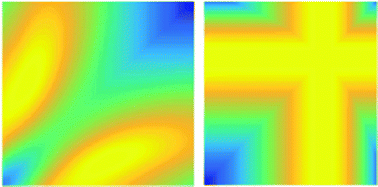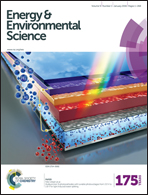Open circuit voltage and efficiency in ternary organic photovoltaic blends†
Abstract
Organic bulk heterojunction solar cells based on ternary blends of two donor absorbers and one acceptor are investigated by experiments and modeling. The commonly observed continuous tunability of the open circuit voltage VOC with the donor1 : donor2 ratio can quantitatively be explained as quasi-Fermi level splitting due to photocreated charges filling a joint density of states that is broadened by Gaussian disorder. On this basis, a predictive model for the power conversion efficiency that accounts for the composition-dependent absorption and the shape of the current–voltage characteristic curve is developed. When all other parameters, most notably the fill factor, are constant, we find that for state-of-the-art absorbers, having a broad and strong absorption spectrum, ternary blends offer no advantage over binary ones. For absorbers with a more narrow absorption spectrum ternary blends of donors with complementary absorption spectra, offer modest improvements over binary ones. In contrast, when, upon blending, transport and/or recombination kinetics are improved, leading to an increased fill factor, ternaries may offer significant advantages over binaries.


 Please wait while we load your content...
Please wait while we load your content...